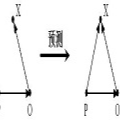Ego-networks are fundamental structures in social graphs, yet the process of their evolution is still widely unexplored. In an online context, a key question is how link recommender systems may skew the growth of these networks, possibly restraining diversity. To shed light on this matter, we analyze the complete temporal evolution of 170M ego-networks extracted from Flickr and Tumblr, comparing links that are created spontaneously with those that have been algorithmically recommended. We find that the evolution of ego-networks is bursty, community-driven, and characterized by subsequent phases of explosive diameter increase, slight shrinking, and stabilization. Recommendations favor popular and well-connected nodes, limiting the diameter expansion. With a matching experiment aimed at detecting causal relationships from observational data, we find that the bias introduced by the recommendations fosters global diversity in the process of neighbor selection. Last, with two link prediction experiments, we show how insights from our analysis can be used to improve the effectiveness of social recommender systems.
翻译:Ego-network是社会图表中的基本结构,但其进化过程仍然广泛未探索。在网络背景下,一个关键问题是链接推荐者系统如何扭曲这些网络的增长,可能限制多样性。为了阐明这个问题,我们分析了从Flickr和Tumblr提取的170M 自我网络的完整时间演变,比较了自发创建的链接与按逻辑推荐的链接。我们发现,自我网络的进化是爆发性的、社区驱动的,其特征是爆炸直径增加、小缩小和稳定等随后阶段。建议支持广受欢迎和连接良好的节点,限制直径扩张。通过旨在从观察数据中发现因果关系的匹配实验,我们发现建议引入的偏差促进了邻居选择过程中的全球多样性。最后,通过两个链接预测实验,我们展示了我们分析的洞察力如何用来提高社会推荐者系统的效力。




